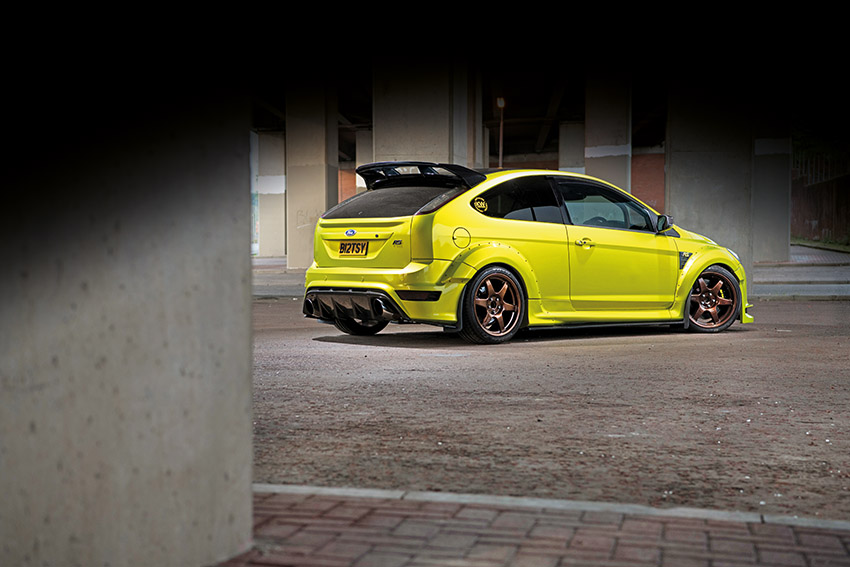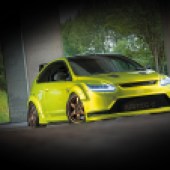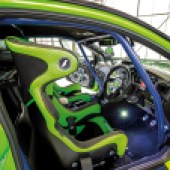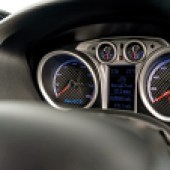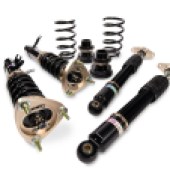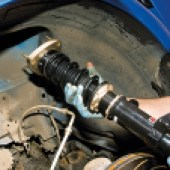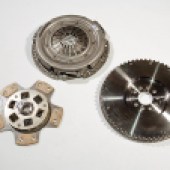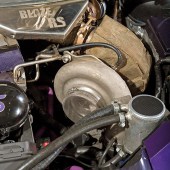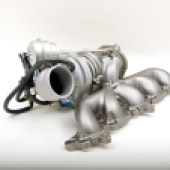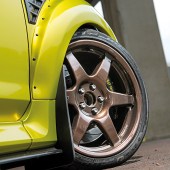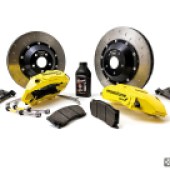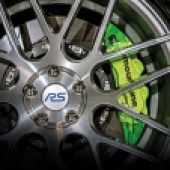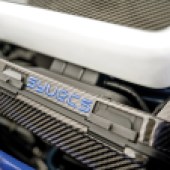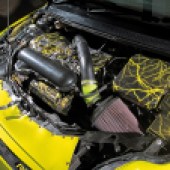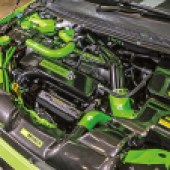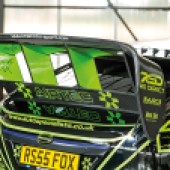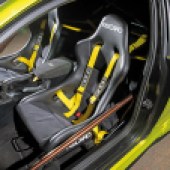As far as modifying goes, the Ford Focus RS Mk2 responds to tuning like a hot knife through butter. Here’s a closer look at how to put your own stamp on the Mk2 RS.
Guide from Fast Ford magazine. Photos: Fast Ford archives.
Ever since it arrived back in 2009, the Mk2 Focus RS (check out our Ford Focus RS Mk2 buyer’s guide) has fired up a tuning war the likes of which we hadn’t seen since the Cossie’s heyday in the mid-Nineties.
Having seen fantastic results from tuning the Mk2 Focus ST, specialists couldn’t wait to get their hands on the even more powerful full-fat RS model. The factory 301bhp was lifted to 350-to-370bhp almost overnight, using modified versions of similar upgrade components available for the ST, and it wasn’t long before tuners were looking to break the 500bhp barrier. That came and went, but still our thirst for power wasn’t quenched.
And then, with accessible aftermarket engine management kits coming to the market, a whole new level of engine tuning began; 500bhp quickly became 600, then 700, and now there are numerous Mk2 Focus RSs running well over 1000bhp. Of course, at these performance levels we’re well beyond the realms of bolt-on upgrades, but with an army of specialists supporting the five-cylinder Duratec found in the Focus, it’s not all one-off custom parts either.
To cope with all that grunt, the factory brakes and suspension will also need some serious work; again, there’s plenty of options to choose from. And, along with the brutal power potential, the Mk2 Focus RS is the model that really kick-started the current trends of aggressive WRC-style bodykits, lairy rear wings and custom graphics packages.
Thanks to such an array of modifications, tuning your Ford Focus RS Mk2 can lead you to anything you want it to be: add some subtle tweaks for an OEM-plus comfortable fast-road cruiser, take a motorsport-inspired approach to create a devastating track weapon, or let your imagination run wild and create a truly unique show car that’s as individual as you are. And it doesn’t matter if your vision requires a useable and mild-mannered 300bhp or a rip-your-face-off 1000bhp-plus, if you really want it, you can have it. Here’s our Ford Focus RS Mk2 tuning guide.

Ford Focus RS Mk2 Engine Tuning
The Ford Focus RS Mk2 shares the same basic 2522cc, in-line five-cylinder, Volvo-sourced, turbocharged Duratec as the ST, but there are some significant differences that allow the RS version to produce more power. The RS’s block is substantially stronger, meaning the block mod required on a tuned ST isn’t necessary on the RS until you’re chasing big power.
One thing that is worth looking at is the inlet manifold. BD Performance’s Darren Evans says, “We’ve seen these fail, and when the plastic inlet cracks it implodes; this can cause small pieces of plastic to be sucked into the engine and damage pistons, bend valves, and cause all kinds of mess.” And when a performance replacement not only bolts straight on but drastically improves the underbonnet aesthetics, as well as giving a noticeable increase in mid-range torque, it’s a bit of a no-brainer. Collins Performance’s Gary Lendon says they have tested several aftermarket upgrades and found the Anembo Engineering version to yield the best results, but it is the most expensive too.
In the search for more power, an air filter or induction kit, exhaust and remap will see an increase to around 340-to-350bhp. The Mountune/RS500 airbox lid works very well, looks OEM, and will support over 400bhp. As for the exhaust system, there are several options depending on how loud and aggressive you want the car to be, but you’ll need either a sports cat or de-cat if you’re planning on anything beyond 370bhp.
Gary says the stock intercooler can cope up to around 340-to-350bhp, but it is a restriction; an upgrade here (coupled with big boost pipes) will take the same mods to around 360-to-370bhp. One of the most popular is the Airtec Stage 2 item; it’s only £50 more expensive than the Stage 1, and both Darren and Gary recommend it for power levels up to around 420bhp.
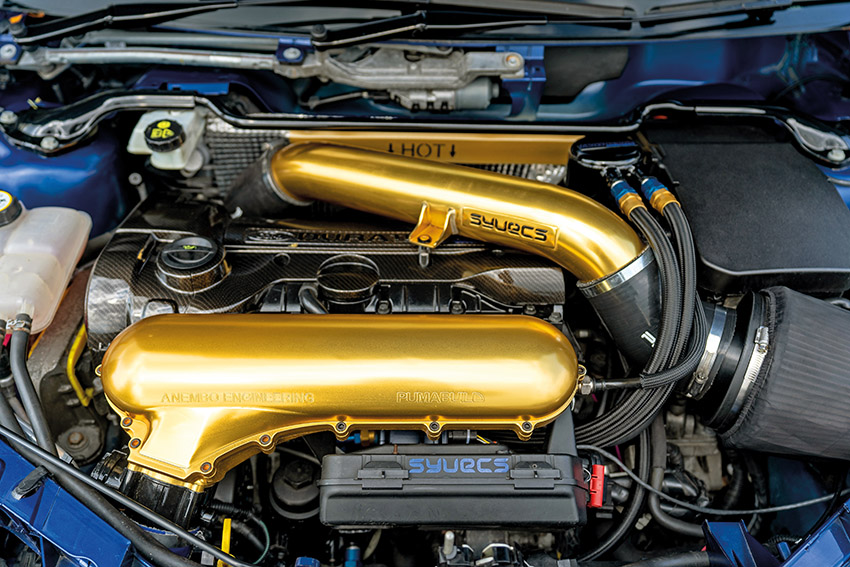
Beyond this, the standard fuel system starts to struggle. To crack 400bhp you’ll need bigger injectors and a beefier pump, but there are a couple of ways to approach the issue. One option is to fit Bosch injectors, with prices ranging from £450 for a set of 550cc items through to £550 for a full set of 1000cc units. These can be coupled to a high-flow 340 litre-per-hour fuel pump at around £750.
The other way to address the fuelling issue is to follow Mountune’s approach when developing the Ford-approved MP350 tuning kit that was fitted to the Focus RS500, and that is to increase the fuel pressure rather than just the flow rates. Gary explains, “This helps keep the desired spray pattern of the injectors to ensure smooth idle and low-speed running, but still deliver enough fuel when needed.”
The downside is that you’ll need a high-pressure fuel pump, and the RS500’s 6-bar item costs a whopping £1800. Luckily, there are alternatives: BD Performance offers an external fuel pump setup using either a single or twin Bosch 044 fuel pumps and a separate swirl pot (the twin pump kit costs around £1300 and will support over 500bhp), while Collins has an alternative in-tank pump to that found in the RS500 for £949 (but you can get £450 back if you exchange your original unit).
From 420bhp upwards, things start to get a lot more complicated; this is the level at which we find the limits of the stock internals and the factory turbo doesn’t have much more to give either. Forged conrods and pistons can be had for £1200-to-£1300, but if you want to really bombproof the bottom end, a block with a set of ductile steel liners fitted costs £1600; these have been proven to withstand over 1000bhp.

Turbo
The stock turbo won’t get anywhere near 1000bhp. And nor will the stock head and cams. A set of Newman fast road camshafts will set you back £600 but will lift power to over 450bhp when coupled with breathing and fuelling mods. The cylinder head will flow enough for 500bhp with a mild port job, but for over 600bhp you’ll need larger 1mm oversize valves too.
The RS’s turbo has the exhaust housing cast into the exhaust manifold, therefore it’s not quick or easy to swap to a larger blower. Instead, companies like Turbo Performance offer hybrid versions that take your original turbo and tweak it to offer far more power potential. Turbo Performance’s Mark Arnold says, “We offer two hybrid options for the RS: our Stage 1 turbo has the compressor housing machined to accept a larger 67mm billet compressor wheel, complete with cut-back blades on the turbine wheel and 360-degree thrust bearing. That’s good for 450bhp and costs about £850. Our Stage 3 will take power over 500bhp, adding an even larger 71mm compressor wheel with a larger K24 turbine shaft. That one costs about £1100.”
For anything more, you’ll need a turbo with physically larger housings. The Garrett GTX3076 is a popular choice at £1500 and will see an RS producing well over 600bhp with the right supporting mods, but there are plenty of turbos to choose from these days. They would need a separate manifold and most likely an external wastegate setup too, so you’d need to factor-in those costs. For enormous power RSs, sometimes the turbo itself needs to be so large it cannot fit in the space between the back of the engine and the bulkhead. That’s where sidewinder style manifolds come in; these reposition the turbo to above the gearbox where there is more space available, but obviously require lots of modification to plumb everything in correctly.
Ford Focus RS Mk2 tuning – ECU & remapping
The standard Bosch ME9 ECU is a very powerful piece of kit, and there are plenty of software upgrades for it; Mountune and Collins Performance both have tunes that will take power to circa 420bhp and can be flashed directly to the ECU yourself, via the mTune handset or iFlash system. Revo and Motorsport Developments offerings need to be installed by an authorised dealer, and up to 600bhp is possible from the factory ECU.
The biggest game-changer in recent years has been plug-and-play stand-alone engine management systems such as the Syvecs system offered by Devil Developments. Replacing the Bosch ME9 unit completely, this integrates fully with the rest of car but is fully mappable and means you can make use of extras like flex-fuel sensors to determine the ethanol content of the fuel being used and automatically adjust the engine mapping to suit.
Syvecs systems also boast an excellent torque biasing traction control system, which is how we get 1000bhp cars that are still compliant and practical enough to use on the street. All in, it costs around £3000, but you’ll also want to add the 4in MAF-less crossover pipe at £450 (big turbo upgrades can cause the factory MAF sensor to have issues, so the Syvecs system removes it and operates using a MAP sensor instead), and flex fuel sensor (£180) if you want to run exotic blends to hit those headline power figures.
As a rule, up to 420bhp can be achieved fairly easily with bolt-ons and a reflash of the ECU at home; from there up to 600bhp is possible on the stock ECU with a built bottom end and big turbo; but for anything over that you’ll be looking at a custom build with a stand-alone ECU to support it.
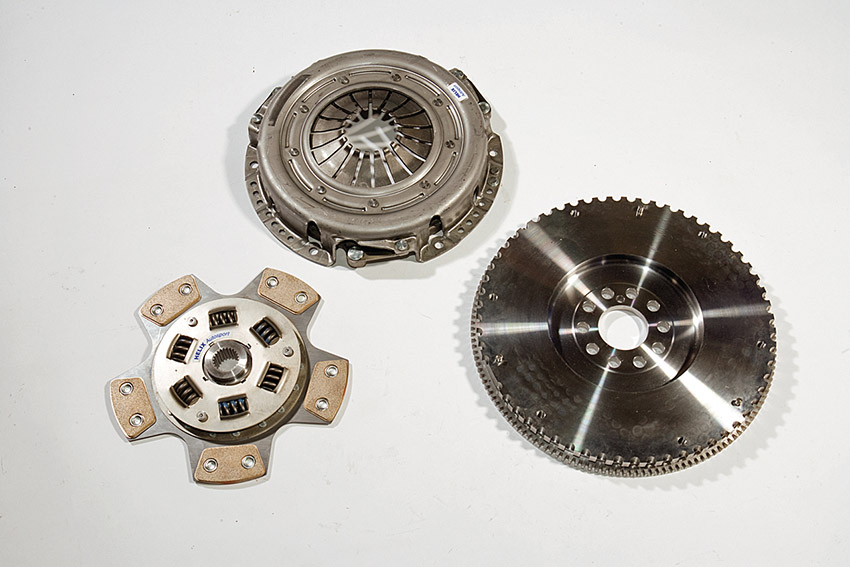
Ford Focus RS Mk2 Transmission Tuning
The M66 six-speed ‘box is a tough unit and will cope with most things thrown at it. We’ve seen it handle some crazy bhp figures, especially if the mapping is kind and the car isn’t used for hard launches and/or aggressive shifts.
Gary Lendon at Collins says even the driveshafts are much tougher than the ST’s and don’t cause any concern on most modified machines. Of course, crazy power levels and/or hard use on track will be a different story. For the ultimate transmission in a Mk2 Focus you’ll be looking at the Quaife QKE45Z M66 sequential gearbox; it’s fantastic, but by the time you’ve added up all the bits, don’t expect to see much change from £10,000.
The factory clutch and dual-mass flywheel is perfectly fine for those first levels of tune up to around 420bhp, but for anything more you’ll need an upgrade. Helix Autosport offers a few upgrades, including organic and paddle clutch options, while the Xtreme Clutch twin-plate upgrade uses two organic drive plates to support over 800lb.ft of torque yet remain comfortable enough for road use. This kit costs around £1600.
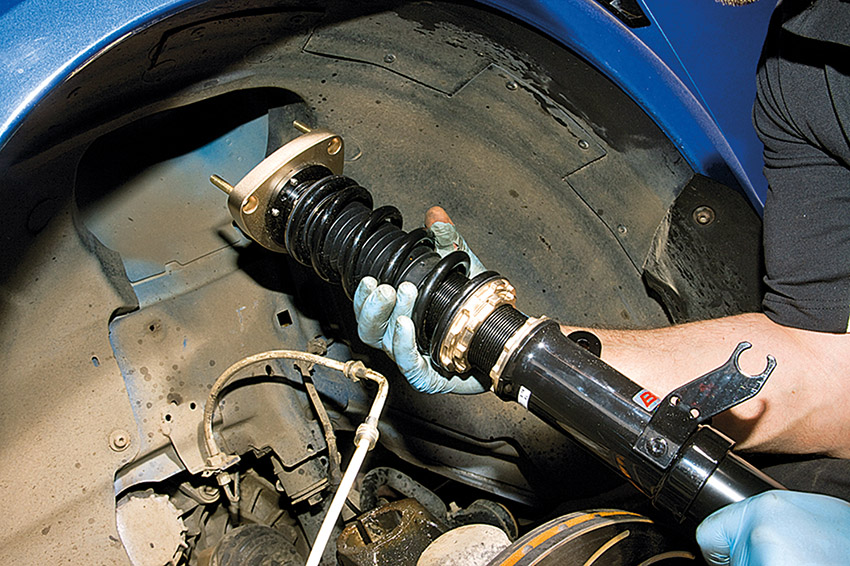
Ford Focus RS Mk2 Suspension Tuning
The RS’s RevoKnuckle design was revolutionary and holds the key to why these cars can put so much power down through their front wheels. They aren’t without their problems, though. Gary Lendon says Collins has seen the RevoKnuckle joints fail, and they are no longer available new. Some specialists are looking into refurbishing them, but rust on the pressed-in ball-joint seems to be the biggest killer, so try to maintain a corrosion-free undercarriage if you can.
One area that Darren Evans at BD Performance says makes a big difference for minimal effort is adding a set of Powerflex polyurethane inserts for the upper and lower engine mounts, plus the gearbox mount. All three only cost around £100, and simply push into the voids in the OE rubber bushes to offer additional support and prevent excessive engine movement.
Talking of bushes, the Mk2 Focus is known for destroying the rear bushes on the front wishbones. The RS is kinder than the ST thanks to the RevoKnuckle, but polyurethane upgrades are a wise investment. Many tuners suggest adding an anti-lift kit when replacing the rear bushes; these have a revised location to offer extra caster and anti-lift properties.
Lowering springs from Eibach or H&R can be had for £200-to-£250 and offer the first step in improving handling performance. But for better control you’ll want to add matched – and ideally adjustable – dampers, and these days that usually means turning to a coilover kit.
Bilstein’s B16 kit (£1600) is reported to be ideal for fast road use, while dedicated track fans might want to invest in coilovers like KW’s Clubsport two-way kit (£2300) with separate bump and rebound control. BC Racing is another popular choice, combining practical performance with a sensible budget; the BR series is available for less than a grand.
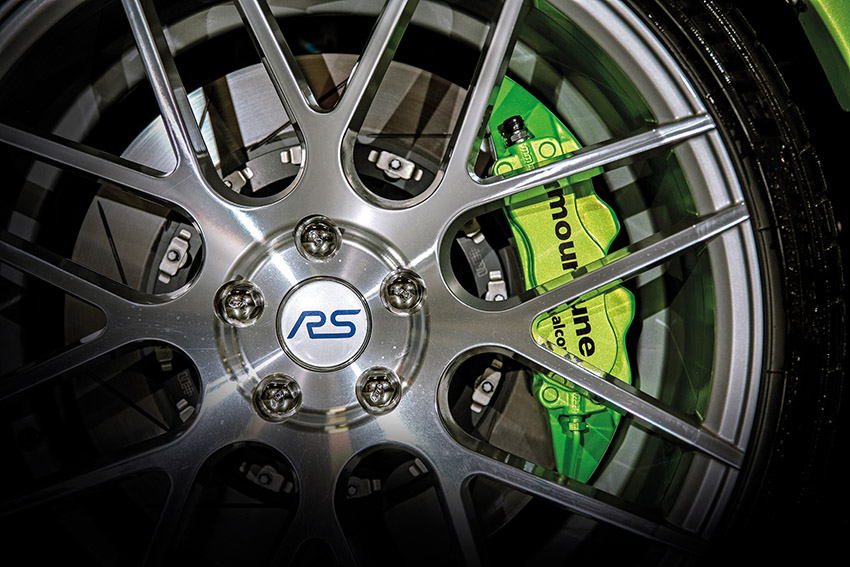
Ford Focus RS Mk2 Brake Tuning
The stock 336mm front and 300mm rear brakes work surprisingly well on most road cars, especially when fitted with some upgraded brake pads, decent fluid and braided brake lines. They do look ugly though. Big brake kits are available for those using their RS on track, or owners who just want something more visually appealing peeking out behind the spokes. Mountune’s Clubsport big brake kit uses a six-pot Alcon calliper and 365x32mm floating discs and is one of the best options available, costing £2250. Similar kits from AP Racing, EBC, and PB Brakes are also available.
At the rear, decent pads coupled to grooved discs and some quality brake lines are all you’ll really need.
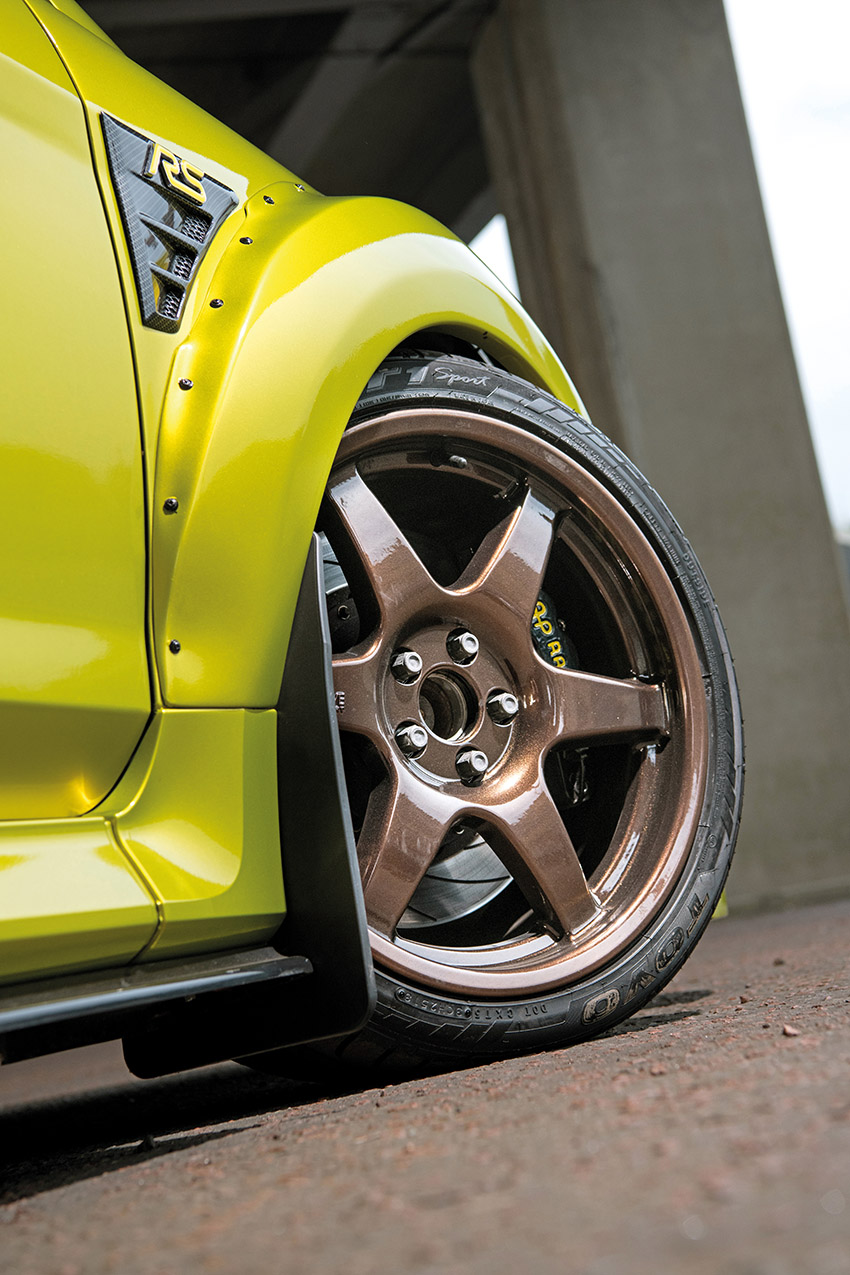
Ford Focus RS Mk2 Performance Wheels & Tyres
Simply painting the factory 19s black is often enough to make a significant difference; just make sure you add black wheel nuts if you do. The standard offset is quite high at ET60, and one of the first upgrades many owners do is fit a set of spacers to get the wheels filling the arches properly; 20mm on the rear and 15mm on the front usually does the trick. That effectively reduces the offset to around ET40-45 on the stock 8.5in-wide rim, so bear that in mind when looking at aftermarket options. And there are plenty of options that will fit the 5×108 PCD and 63.4mm centre bore, from the likes of Rotiform, Bola, BBS, Rota and so on.
Mountune has already done the calculations for you with its exclusive OZ Racing Ultraleggera HLT wheel from its Clubsport range of chassis upgrades. Not only will the wheel design clear the Clubsport big brake kit, it’s also wider than the originals at 9in and has an optimised offset of ET58 to fill the arches without fear of introducing any unwanted torque steer.
Dropping to 18in is common for track use and means you can fit the tough-as-nails Compomotive MO6, but most people tend to shy away from upping to 20s unless it’s a show car because the lower profile tyres required can ruin the ride. It goes without saying that you should always fit decent tyres and shy away from anything in the budget sector. It’s an RS, after all.
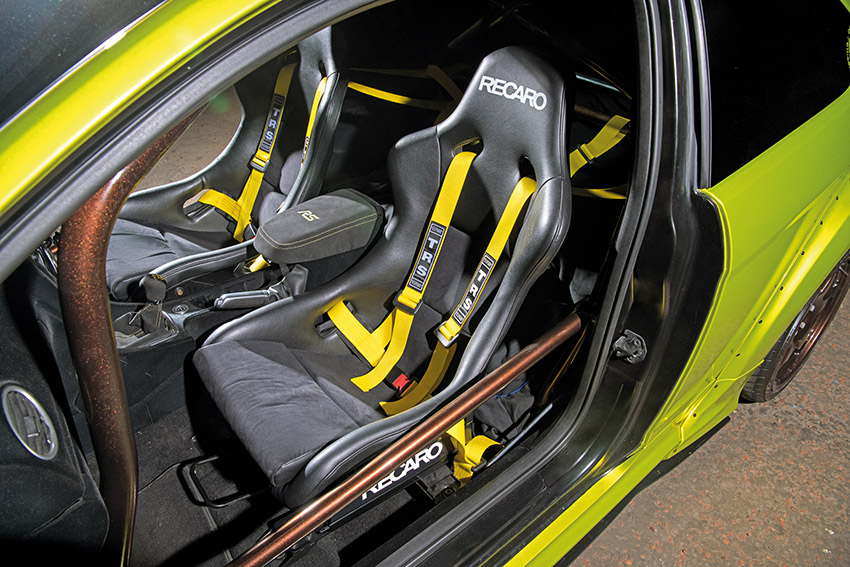
Interior
The RS was well specced as standard and came with the legendary Recaro Sportster CS bucket seats. What you do in here will be all down to personal tastes and the style/intended use for the car. Show cars may go for a custom retrim with lots of carbon fibre additions, while a track weapon may see any unnecessary weight removed and a roll cage and four-point harnesses added. It’s a case of horses for courses, but thankfully there’s loads of feature cars that appear in Fast Ford regularly to give you some inspiration.
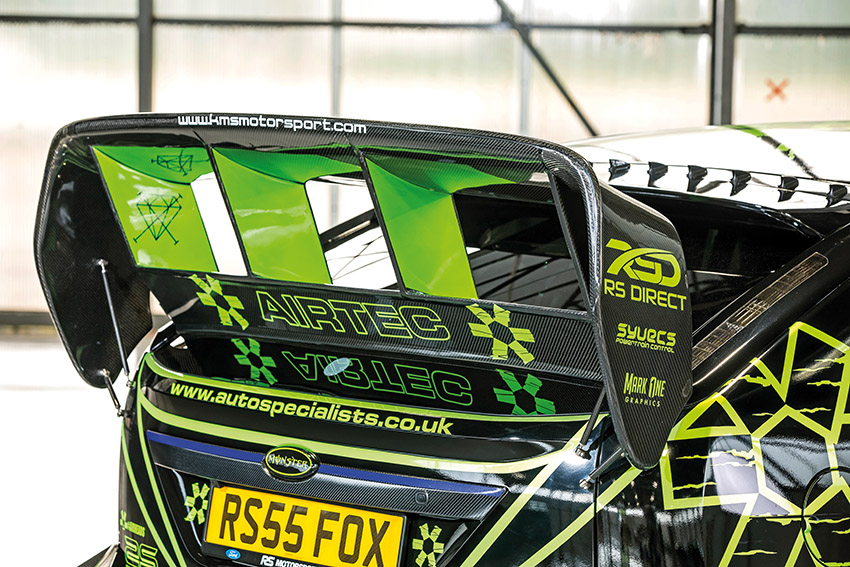
Styling
The Ford Focus RS Mk2 was the car that kick-started the lairy graphics craze that took the fast Ford world by storm; its aggressive shape lends itself nicely to custom designs, and we’ve seen everything from modern interpretations of classic race liveries right through to comic book heroes on the side of Mk2s. Of course, you don’t need to wrap an RS or paint it a unique colour to make it stand it out, but it does offer a blank canvass for you to express yourself.
There’s a wealth of styling upgrades available too; subtle touches such as splitters and side skirt extensions from Maxton Designs and Triple R Composites are affordable tweaks that work well, but there are plenty of sexy carbon fibre parts to spend your money on. For an ultra-aggressive appearance, big WRC style rear wings and wide-arch kits are readily available too.

